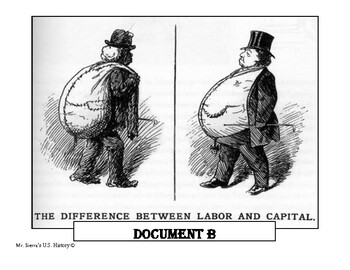The Titans of the Gilded Age: Power, Wealth, and Labor Practices
The Gilded Age was a period of rapid industrialization and economic growth in the United States, spanning from the 1870s to the early 1900s. This era is often characterized by the rise of powerful industrialists, frequently labeled as “Robber Barons,” who accumulated vast fortunes through aggressive business practices. This article delves into the lives and impact of these titans, focusing particularly on Cornelius Vanderbilt and his approach to labor management.
Understanding the Gilded Age Robber Barons

Definition and Characteristics
The term “Robber Baron” refers to wealthy and influential industrialists of the Gilded Age who amassed their fortunes through monopolistic practices, often at the expense of workers and fair competition. These figures were known for their ruthless business strategies and substantial influence over the American economy.
Key characteristics of Robber Barons include:
- Monopolistic Practices: Many of these industrialists controlled entire industries or sectors, reducing competition and driving up prices.
- Exploitation of Labor: Poor working conditions, low wages, and long hours were common for workers under their control.
- Political Influence: They often wielded significant political power, influencing laws and policies to benefit their business interests.
Major Figures and Their Influence
Several prominent figures epitomized the Robber Baron era, including:
- John D. Rockefeller: Founder of Standard Oil, Rockefeller controlled nearly all oil refining in the U.S. at his peak. His practices led to the creation of antitrust laws.
- Andrew Carnegie: A steel magnate whose company, Carnegie Steel, dominated the steel industry. Carnegie’s philanthropy later helped to reshape his legacy.
- J.P. Morgan: A financier and banker who played a crucial role in the consolidation of industries and financial institutions.
Cornelius Vanderbilt: The Railroad Tycoon

Early Life and Career
Cornelius Vanderbilt, often known as “Commodore Vanderbilt,” was a key figure in the development of the American railroad industry. Born into modest circumstances on Staten Island in 1794, Vanderbilt started his career in shipping before transitioning to railroads.
Key milestones in Vanderbilt’s career include:
- Expansion of Railroads: Vanderbilt’s consolidation of several small railroad lines into a vast network helped revolutionize transportation in the U.S.
- Wealth Accumulation: His aggressive business tactics allowed him to amass significant wealth and influence.
How Did Cornelius Vanderbilt Treat His Workers?
Cornelius Vanderbilt’s treatment of workers was often harsh and exploitative. The railroad industry was notorious for its difficult working conditions, and Vanderbilt’s practices were no exception.
- Labor Conditions: Workers faced long hours, dangerous conditions, and minimal safety precautions. The railroads were known for their grueling labor demands.
- Worker Strikes: Discontent among workers led to several strikes, including notable incidents in 1877, where workers protested wage cuts and poor conditions. Vanderbilt’s response was often to use private security and legal measures to suppress labor unrest.
Despite his significant contributions to the American infrastructure, Vanderbilt’s legacy is marred by his treatment of workers. His approach exemplifies the broader challenges faced during the Gilded Age, where the pursuit of wealth often came at the expense of labor rights.
Legacy and Impact
Vanderbilt’s influence on the railroad industry was profound, helping to shape the modern transportation system. His legacy, however, is dual-faceted:
- Positive Impact: His work in expanding and modernizing railroads played a crucial role in America’s industrial growth.
- Negative Aspects: The harsh treatment of workers under his management reflects the broader exploitation typical of the era.
Labor Practices and Social Impact
Working Conditions in the Gilded Age
The Gilded Age was marked by significant inequities in working conditions:
- Dangerous Work Environments: Many workers faced hazardous conditions with little to no safety measures.
- Low Wages: Compensation was often inadequate for the long hours and dangerous work.
- Lack of Workers’ Rights: Labor laws were minimal, and workers had little recourse against exploitation.
Workers’ Rights and Reforms
The harsh realities of Gilded Age labor practices eventually led to reform efforts:
- Labor Movements: Organized efforts such as the Knights of Labor and the American Federation of Labor emerged to advocate for workers’ rights.
- Legislative Changes: Reforms including improved safety standards, fair wages, and labor laws were enacted as a response to the pressures from these movements.
The Gilded Age Economy: Wealth and Power

Wealth Distribution
The Gilded Age saw a significant concentration of wealth among a small elite:
- Economic Disparity: The wealth of Robber Barons contrasted sharply with the poverty experienced by many workers.
- Social Stratification: The era highlighted the stark divide between the affluent and the working class, fueling debates on economic inequality.
The Role of Monopolies and Trusts
Monopolies and trusts played a critical role in the Gilded Age economy:
- Formation of Monopolies: Figures like Rockefeller and Carnegie controlled entire industries, eliminating competition and influencing prices.
- Impact on Competition: These monopolies stifled competition and led to higher prices for consumers, prompting calls for antitrust legislation.
Public Perception and Historical Legacy
Contemporary Views on Robber Barons
The perception of Robber Barons has evolved over time:
- Historical Critique: While initially viewed as heroes of industry, their ruthless tactics and exploitation have led to a more critical reassessment.
- Media Portrayals: Films, books, and documentaries have explored both their contributions and their ethical shortcomings.
Historical Legacy and Lessons
The legacy of the Gilded Age Robber Barons includes:
- Modern Industry Practices: Their practices have influenced current business regulations and labor laws.
- Lessons Learned: The era underscores the importance of fair labor practices and the need for effective regulation to prevent exploitation.
Summary of Main Characters
| Name | Role | Key Achievements | Labor Practices |
|---|---|---|---|
| John D. Rockefeller | Oil Industry Mogul | Founder of Standard Oil, pioneer in refining | Monopolistic practices, labor exploitation |
| Andrew Carnegie | Steel Magnate | Founded Carnegie Steel, major philanthropist | Labor strikes, poor working conditions |
| J.P. Morgan | Financier and Banker | Consolidation of industries, major financial influence | Monopolistic control, economic manipulation |
Explore the lives of the Gilded Age Robber Barons, focusing on Cornelius Vanderbilt’s labor practices and the impact of these industrial titans on American history.
References:
- Wikipedia: Cornelius Vanderbilt https://en.wikipedia.org/wiki/Cornelius_Vanderbilt
- Wikipedia: John D. Rockefeller https://en.wikipedia.org/wiki/John_D._Rockefeller
- Wikipedia: Andrew Carnegie https://en.wikipedia.org/wiki/Andrew_Carnegie
- Wikipedia: J.P. Morgan https://en.wikipedia.org/wiki/J._P._Morgan




